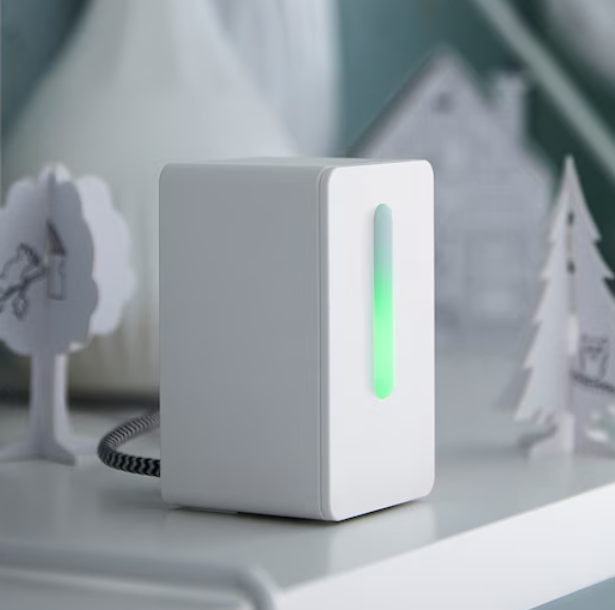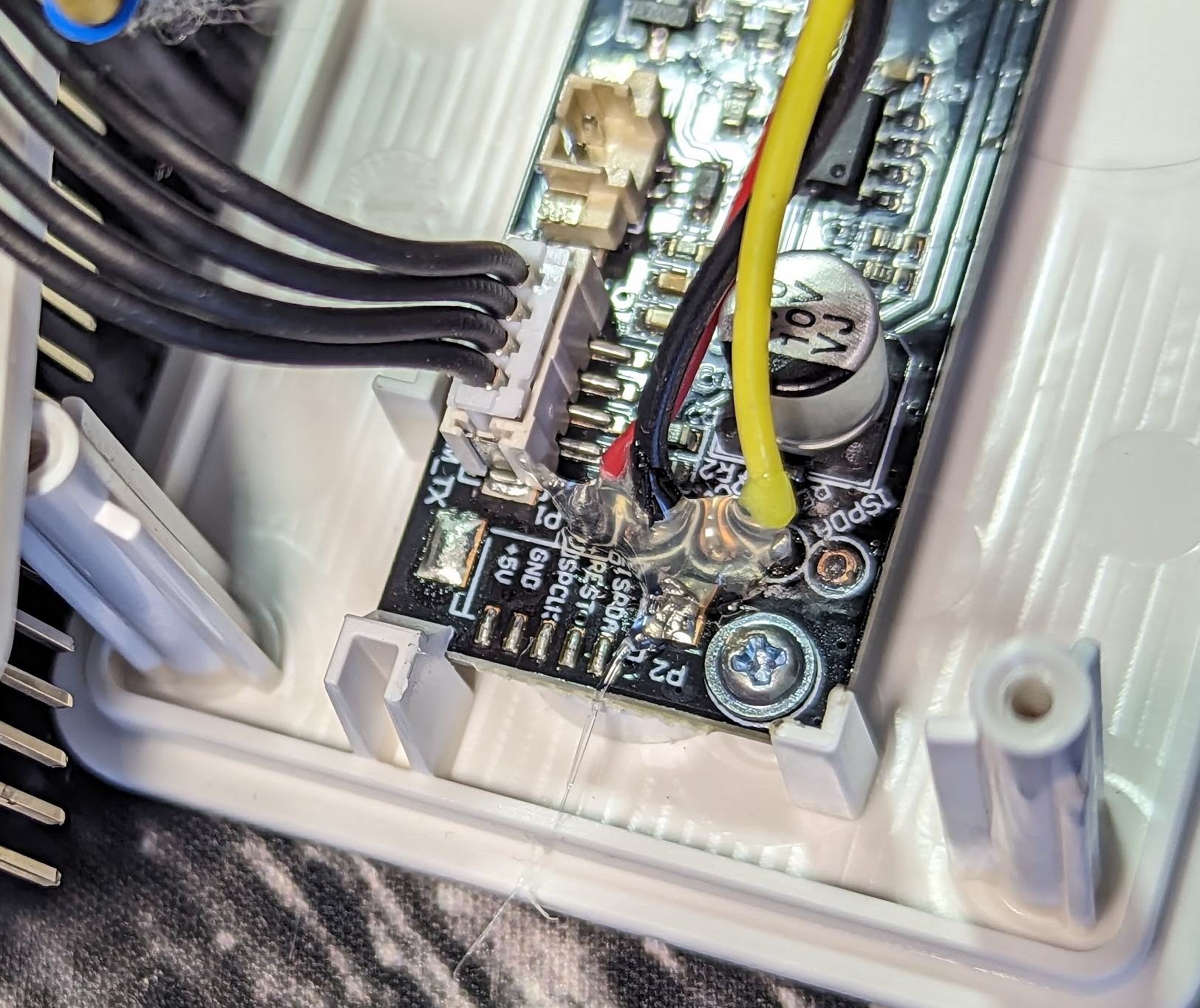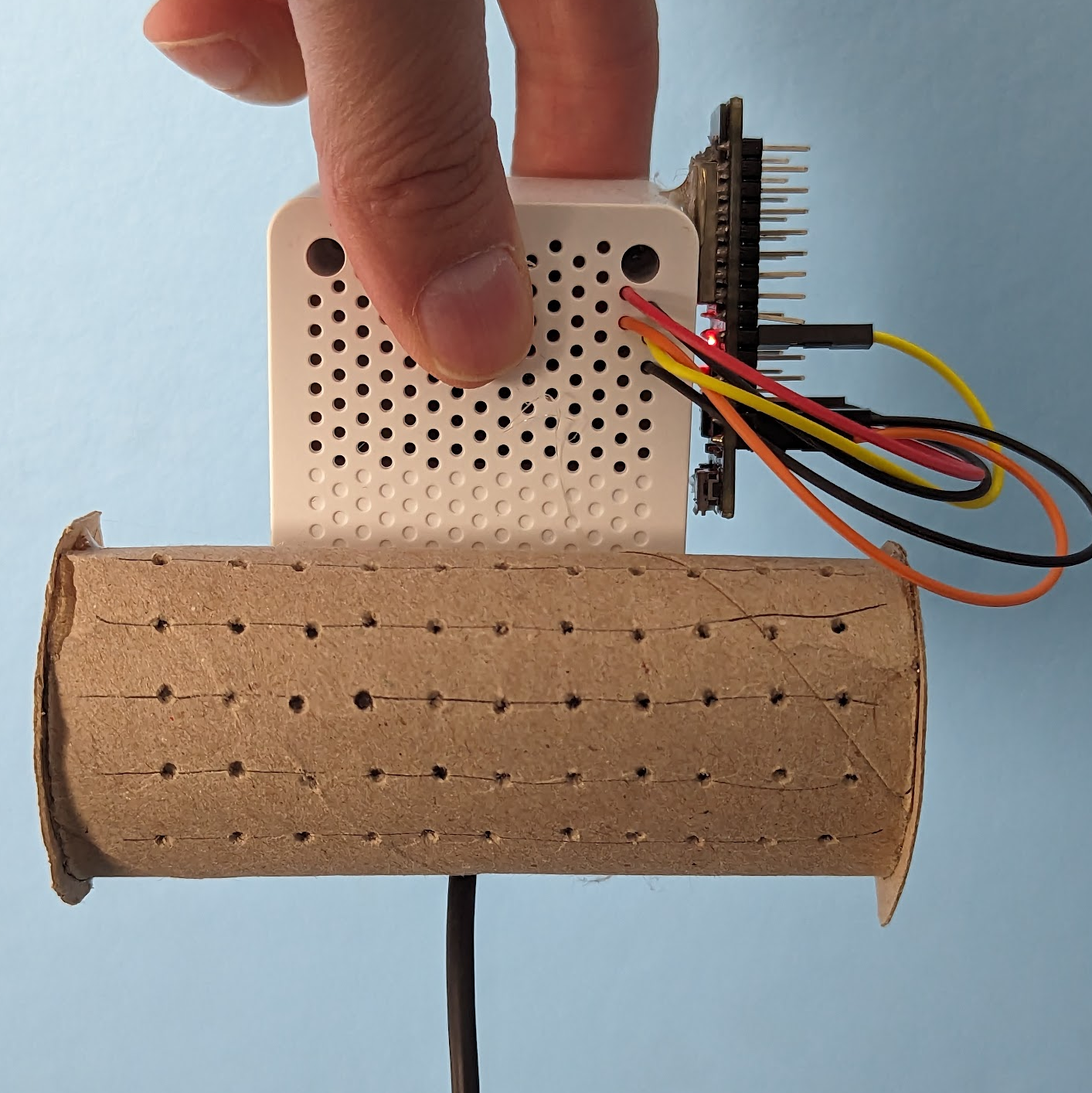Quite a while ago I bought an IKEA Vindriktning air quality thingie on sale with the intention to connect it to my Home Assistant setup. It’s a quite simple affair, there is a RS232 TX pin on the Vindriktning board that spews out values, so just connect a ESP32 to that and push the values to MQTT. There’s quite a lot of guides online that are easy to find, Fabisoft, Oversubstance, Instructables, Turanis, if you want some inspiration.
Instead of writing my own software there are plenty open-source versions online. I wanted to try ESPHome version since I also run Home Assistant. After some troubles getting the ESPHome command-line tool to work (for unknown reasons) I uploaded the firmware and the device popped up on the network and started to spew out data
It was an easy operation. But since I used a big-ass ESP32s dev-board (that wouldn’t fit inside) I had to route the connections out via the ventilation holes and hot-glue it to the outside. If it works, it works 🙂 
The idea was to have it in the bedroom to monitor the air quality, but during the first evening it became obvious that it wouldn’t work, not without modifications. The thing was quite noisy, and not in a nice white-noise kind of way. Every couple of seconds it starts the fan and does a measurement, and then spins the fan down again, so you have no way of getting used to the sound. So after just 10 minutes in bed I got up and disconnected it.
The solution was to build some kind of silencer, and since I’m not that skilled with tools it came down to paper craft. By combining a bog-roll lined with some extra thick fabric (the same used as padding in my first Ursa inspired keyboard) and filled with a little bit of pillow stuffing. 
It will be replaced by something a bit better in the future, the plan is to replace the small internal fan with something larger, slower and quieter. But that will have to be the subject for future post.
To make the noise a little bit softer I cut the fan connector from the motherboard and also routed it outside to connect it to 3.3V instead of 5V, I’m not sure this doesn’t affect the measurements, but Someone Online™ said it was O.K.